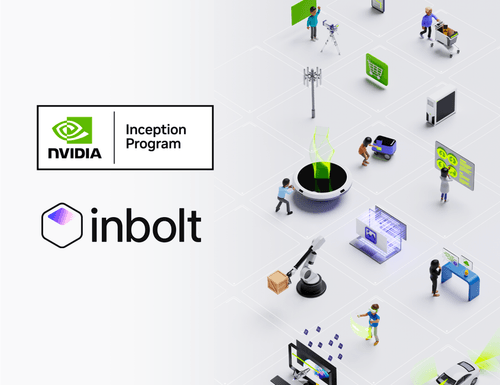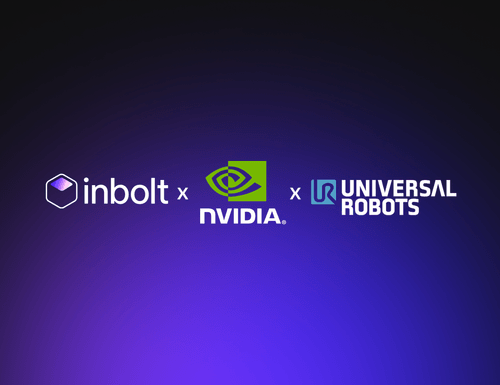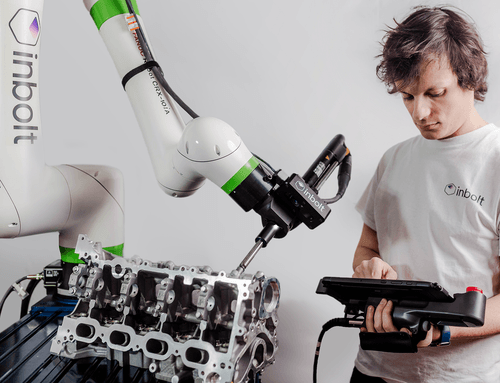Interview with Robin Dechant
With a background experience as an investor at Point9 Capital for four years as an early stage investor, primarily focusing on B2B SaaS companies and marketplaces, and a keen interest for the rise of Industry 4.0, Robin has a deep understanding of the industry’s intricacies. Now founder of his own company, we were lucky enough to ask him to talk about his community, share some of his advice for startups, and have him walk us through his expectation for the manufacturing industry in the years to come.
A few weeks ago, I had the opportunity to discuss with Robin Dechant, founder of Kwest and creator of the newsletter The Future of Manufacturing.
With a background experience as an investor at Point9 Capital for four years as an early stage investor, primarily focusing on B2B SaaS companies and marketplaces, and a keen interest for the rise of Industry 4.0, Robin has a deep understanding of the industry’s intricacies. Now founder of his own company, we were lucky enough to ask him to talk about his community, share some of his advice for startups, and have him walk us through his expectation for the manufacturing industry in the years to come.
Introduction & The Future of Manufacturing
Robin Dechant
I worked for Point9 Capital, a VC firm, for four years as an early stage investor, primarily focusing on B2B SaaS companies and marketplaces.
Between 2017 and 2018, there was a surge of Industry 4.0 startups in Europe. I conducted an analysis of the landscape and identified around 80 to 100 startups that emerged during that period. When I published this analysis, I received many inquiries from people asking to ad their companies, and people who were interested in my methodology and recommended reading materials. This led me to start pitching curated collections of relevant links, which gained significant traction. Within the first 24 hours, I received over 100 signups.
During that period, there was interest in the European tech industry, both among tech enthusiasts and general investors. It seemed to develop overnight. I used to write a monthly newsletter, but due to time constraints, I had to reduce it to once a quarter because I am now running a company called Kwest. Our focus is on developing software for renewable energy installers, specifically solar companies. Our software helps them manage projects, streamline collaboration, and improve overall efficiency.
It’s unfortunate that I had to reduce the frequency of the newsletter because I genuinely enjoy the research, reading articles, and selecting the ones to include.
INBOLT
Do you enjoy building your own company?
Robin Dechant
I do enjoy it. The main motivation for leaving the investment world was my desire to build something of my own. I think the emotional stress is the biggest difference, since it is my own company.
INBOLT
In terms of your experience and journey with The Future of Manufacturing, you mentioned earlier that you enjoyed reading the newsletter and discovering interesting articles. Are there any specific websites, sources, or newsletters that you regularly visit and consider to be of high quality?
Robin Dechant
Answering this question is not easy, to be honest. That’s one of the reasons why I started my newsletter – there is a lot of information out there. However, a few sources come to mind. Dealroom has a comprehensive annual report. Industry4.0club from the US hosts events, and has taken over the community I built. They are a good source of information. Apart from that, I gather information from various platforms like LinkedIn, Twitter, and different newspapers. It’s challenging to pinpoint one specific source, but over the past six to twelve months, I’ve noticed an increasing number of newsletters focused on manufacturing.
I always gather all the links for the upcoming newsletter by checking various sources such as Sifted, TechCrunch, Wall Street Journal, Financial Times, and recently a16z, who are investors and have been producing more content related to manufacturing. They have a series called “American Dynamism,” which covers manufacturing extensively. They are making significant investments in this area and have also conducted some studies. Another VC firm I appreciate is Eclipse Ventures, as they have published articles for founders on how to avoid the pilot purgatory, which is particularly relevant for early-stage hardware companies. I find these resources valuable because they provide useful insights and value to others.
INBOLT
Would you mind talking a little bit about The Future of Manufacturing community? How many people were part of that adventure before you merged?
Robin Dechant
Initially, we had a signup list of around 500 people, with approximately 150 to 200 actively participating in the community. I intentionally focused on creating a close-knit and familiar environment rather than rapidly expanding the numbers. By inviting individuals from the signup list, we ensured that everyone knew each other, fostering strong connections, and facilitating the delivery of high-quality content, people, and events. This approach proved successful, and we received positive feedback from the community members.
To be honest, I would have loved to keep building the community. But the thing is, to make a community successful, you need to dedicate a few hours every week. And with my own company to run, I just couldn’t spare that much time. So unfortunately, I couldn’t continue giving it the attention it deserved.
INBOLT
Were the people within the community interacting with each other?
Robin Dechant
It was always a cool experience to receive pictures from community members who had connected and formed friendships. I recall a particular instance where a person from France visited another person in Germany, and they enjoyed a beer together after meeting in the community. These kinds of stories were really cool. It aligned with our purpose of bringing people together who might not have crossed paths otherwise.
Advice for Startups
INBOLT
Do you have any advice, specifically for early stage founders that have raised? What are things that you think would set them apart from other companies?
Robin Dechant
One of the key metrics I always considered for manufacturing is time to value. This is especially important in manufacturing because it typically takes a significant amount of time for a company or startup to provide value to manufacturing companies. Being an outlier in this metric usually indicates potential success. Today, it’s even more interesting than it was five years ago because there’s an increasing adoption of digital tools and robotics by small and medium-sized businesses (SMBs). SMBs don’t want to go through a six-month pilot and three months of integration work. They prefer a solution that can be implemented quickly and start delivering results right away. So, if I were a founder at an early stage, I would focus on reducing the barriers to using my products or tools and on how quickly I can deliver value.
For founders in the manufacturing industry, it is exceptionally challenging to achieve seamless operations. Unlike tech companies with abundant software tooling and easy data integration, manufacturing startups face unique obstacles. They require physical presence, connections to specific machines, and the involvement of integrators. These factors significantly raise the barriers to entry for product usage.
For first-time and less experienced founders, this becomes particularly tricky. Selling to a single large enterprise client may seem like the opposite approach, but gaining trust from large companies like Bosch when you are a recent university graduate offering a solution can be difficult to achieve.
INBOLT
What are the best practices you’ve seen for early stage startups?
Robin Dechant
One successful approach I’ve observed is called “Road to Production”. Essentially, they create a roadmap outlining how their product should be implemented until it reaches full production. This roadmap provides transparency and guides the company and customers on how to successfully utilize the product.
Many customers may not have prior experience purchasing software or automation solutions, especially smaller ones who might rely on integrators or consulting firms for assistance. By offering additional services, clarity, and a clear understanding of how to achieve success, trust and transparency are increased. When customers see that other companies, such as Customer ABC, are also following this journey, it enhances trust and clarity for both sides.
Another approach I find valuable is co-designing, where you collaborate with a larger customer to develop a novel solution that can be replicated. This can be particularly effective when targeting Enterprise clients. However, the initial challenge lies in gaining the trust of the first customer.
Partnerships can also be beneficial, especially after achieving key product-market fit. Collaborating with integrators, distribution channels, or adding on to existing platforms can drive sales. But partnerships won’t be effective without a clear understanding of the product’s value and how to sell it. Because if you don’t really know what the value of your product is, and how you’re going to sell it, how should a third party know how to sell it?
Founders often discuss using partnerships to boost sales, but initially, the focus should be on learning from the first customers, refining the sales process, understanding the product’s value, and effectively managing stakeholders. Only then can the knowledge be transferred to others.
INBOLT
Do you feel like the customers usually don’t have transparency, or that they aren’t educated enough on the existing solutions to know what they’re looking for?
Robin Dechant
A few years ago, there was a lack of understanding regarding what to look for in the field of Industry 4.0. It was primarily seen as a marketing term, with many companies making promises about automation. However, achieving automation potential requires various factors: data stored in the cloud, machine connectivity, and integration of robotics. The necessary infrastructure for these elements was not fully developed at that time. As a result, there was a significant gap between customer expectations and the reality of what could be achieved, leading to confusion. Although the situation has improved today, there is still a noticeable gap that exists between customer expectations and the current reality.
Another example we observed at Point9 is what we call “pilot purgatory.” This term refers to pilots that were initiated but never successfully concluded. It’s a real-life scenario where many startups were experimenting with different approaches without a clear goal in mind. There was a lack of understanding regarding what they were trying to achieve. However, the situation has significantly improved as everyone has gone through a learning phase. In the past, even large customers faced challenges in knowing how to proceed.
I recall seeing several blockchain projects during the 2017-2018 period that lacked substantial value. This was not due to the technology itself, but rather because people didn’t know how to effectively procure and implement the technology.
INBOLT
Do you think this is something that we, as a startup company, need to work on (educating companies), or is it something that we all collectively need to work on, to raise the bar of understanding of how to move forward with automation?
Robin Dechant
Ultimately, I believe that the current state of Industrial Tech is a result of a lack of knowledge rather than a lack of available technology. The technology itself exists, and we can build robotics, but widespread implementation at scale is still a challenge. This is due to various factors such as change management, data connections, interfaces, APIs, and transitioning to cloud-based systems.
There was a time, around two to four years ago, when people had concerns about robots automating factory floors. Now, the focus has shifted to AI automating white-collar jobs. It emphasizes the importance of managing expectations and understanding the changes needed in this evolving landscape.
INBOLT
When evaluating early-stage startups, what are some red flags and green flags that you specifically look for?
Robin Dechant
When considering potential investments, an immediate “no” is often easier than an immediate “yes.”
Starting with red flags, one major concern is a founder who is not actively involved in operations. It raises concerns if there is an advisor or co-founder holding a significant stake (10-20%) but not dedicating similar working hours as the other co-founders. It is crucial for founders to work full-time on the venture to demonstrate commitment and shared risk. Because otherwise, if they don’t take the risk, why should an investor?
In the manufacturing industry, I have encountered cases where companies paid advisors a significant percentage for their industry connections (10 or 15%), which I find unreasonable. It’s okay to have an advisor, and it’s okay to give this person some sort of shares, but definitely not that many.
Another red flag is building a software company without a technical co-founder. While the debate exists, especially with the availability of no-code tools, having someone with technical expertise is essential. It is possible to bring in a CTO later, but the absence of a technical co-founder raises concerns, though not necessarily a complete red flag.
On the positive side, unique insights are a green flags. I prioritize startups with unique insights into the problem, market, customers, and sales strategies. Manufacturing is a complex industry, and if a startup hasn’t sold to manufacturing companies before, it can be a time-consuming learning process that may jeopardize the company’s viability. Similarly, in areas like predictive maintenance or shop floor analytics, there is much hype but relatively few successful companies. This may be due to the inherent challenges in acquiring the necessary data, requiring a different approach. So, unique insights hold immense importance.
Also, any prior company-building experience adds to the positive factors that I consider. Operating and building a very early-stage company requires a unique approach. It can be quite different from working at the same company for 15 years without experiencing the pre-product-market fit days. As an early-stage founder, the ability to pivot, be adaptable, iterate, and experiment is crucial. This execution mode differs from simply scaling a company. While it’s not a requirement, having prior experience in such a phase can be advantageous.
In addition, observing market shifts is interesting. These shifts can enable companies to grow much faster by leveraging underlying market dynamics. For instance, decreasing hardware costs have increased the adoption of robotics, particularly among small and medium-sized enterprises (SMEs). Another example is the availability of plug-and-play AI models that can be used with drones. Building on these market shifts can be beneficial for long-term investment strategies. In the solar industry, the decreasing cost of solar panels is a long-standing trend. There’s no way I would bet against solar.
INBOLT
Do you have practical advice for companies considering the adoption of robotics? What guidance would you offer to help them navigate this process smoothly?
Robin Dechant
Many companies have budget and resources but are afraid of trying new things due to the fear of failure. However, I believe that if a company doesn’t explore new possibilities, they won’t gain valuable knowledge. The less they try, the less they learn, eventually leading them to a point where it becomes extremely difficult to change. Ultimately, it’s beneficial for people to communicate with those who are already using a solution. Companies thrive on exchanging knowledge, and as a provider, if you can facilitate these connections, it builds trust. It’s crucial to have initial supporters, but I’ve also witnessed some companies successfully leveraging this approach. So, utilize your early fan-base and network, even if they aren’t currently using the product.
And then the rest is just “road to production”, materials, basically trying to decrease barriers and increase the confidence in why it makes sense to try out your solution.
No-code Automation and Hardware-as-a-service
INBOLT
You wrote a newsletter on the rise of vision technology and robotics startups. Do you have any specific case studies that you can remember that you think might have a strong impact on the near future?
Robin Dechant
To be honest, I didn’t focus on specific case studies. Instead, I wrote about the overall improvement in technology and how it is now at a point where it functions remarkably well. For instance, there is a company in France called Exotec that has developed robots capable of not only moving on the shop floor but also going up and down, which I find impressive. On a lighter note, I recently learned that lawnmowers can now navigate autonomously in gardens. Previously, they required fences to stop them from going astray, but now they can scan the environment and adjust their path accordingly, similar to Roombas. I spoke to someone selling these lawnmowers, and they mentioned that sales have significantly increased because these robots are no longer “dumb” but are intelligent in interacting with their surroundings. This development has made it more affordable and appealing for people to consider purchasing these robots.
On a related note, computer vision and robotics have also improved, enabling them to become smarter in understanding the environment. In the past, robots were confined to robotic cells due to safety concerns, but with advancements in technology, they can now better perceive their surroundings and even pause their movements when a human crosses their path. This progress expands the possibilities for various applications in manufacturing and warehousing.
So in the end, this newsletter was more about the fact that the technology now is so good it has opened up numerous applications in the manufacturing and warehousing industry. Robots aren’t as dangerous, and they’re smarter. In certain cases, programming robots is no longer necessary. Companies like Wandelbolts have developed innovative approaches where you can teach robots, using computer vision, or a special pencil that allows you to draw movements, which the robot then mimics without the need for coding. These advancements are reducing the barriers for companies to adopt robotics and making the robots themselves much smarter.
INBOLT
The concern with no-code automation is that it can hide the complexities involved. When you buy these solutions, you might not fully understand how they work because the source code is not accessible to you. So if something goes wrong, only the vendor can fix it, and that’s why trust becomes crucial. Another issue is that the robot’s capabilities are predetermined in a no-code system, so they might not fit your specific needs. This lack of flexibility can be limiting. Do you agree?
Robin Dechant
Flexibility and trust are indeed important considerations when it comes to no-code automation. The lack of flexibility can raise concerns about whether the solution will work as intended, and what happens if it doesn’t. Robustness is crucial in this regard. While I don’t have extensive knowledge on the topic, I have observed that some colleagues are critical of these companies because they have invested significant time in coding and understand how to operate robots, viewing the no-code approach as somewhat deceptive. They see it as a trick where something is sold without complete transparency or where the buyer may not have full knowledge about the product. I think it’s something that I keep in mind because of what I’ve been exposed to in my company.
While the concept of no code is intriguing, it may not hold as much appeal for a complex application, or operating within conservative industries. In theses cases, the focus is on finding practical solutions that work effectively, regardless of whether it involves using no code or programming by oneself or someone else. The key consideration is delivering tangible results rather than the specific approach taken.
INBOLT
Regarding robotics-as-a-service (Raas): It sounds like a great idea, and yet very few people are using it. Do you have any thought as to why this is happening?
Robin Dechant
Manufacturers are slowly adapting to software-as-a-service and getting used to the Cloud. But now you come with an even more innovative model, because you suddenly sell hardware-as-a-service.
There is inherent risk involved for manufacturers in purchasing hardware-as-a-service. Traditional purchasing models involve upfront capital expenditure, and transitioning to a subscription-based model requires a shift in mindset and an acceptance of ongoing costs. This change in approach can be met with resistance or hesitation from manufacturers who are used to the traditional purchasing model.
Secondly, the mindset shift required to fully embrace HaaS may not be widespread in the industry yet. Manufacturers are accustomed to owning and maintaining their equipment. Adopting a hardware-as-a-service model means relinquishing ownership and relying on external providers for equipment maintenance and upgrades. This transition requires trust, understanding, and confidence in the service provider’s ability to deliver on performance, reliability, and support.
Read our article about What Are Integration Costs here.
INBOLT
The risk versus reward isn’t balanced enough for them to take the risk?
Robin Dechant
Yes. Brownfield environments have legacy systems, older equipment, and established processes that have evolved over time. These environments have a traditional, often conservative, and sometimes resistant to change mindset. The transition from old systems to new ones requires careful planning, change management, and clear communication to gain buy-in from stakeholders.
I believe one of the reasons why robotics has been successful in warehousing and logistics is due to the lower complexity and dependency on various machines within warehouses. The increase in warehouses built as a result of e-commerce has made it easier to implement robotic solutions compared to complex factory environments. It’s a bit unfortunate though.
Many investors have often overestimated the expansion potential of companies once they sign a major client, such as Bosch. The assumption is that with multiple factories, the company can rapidly scale. However, the challenge arises from the fact that these factories are not all identical. They may have different machine stacks, or software stacks. Expanding from one factory to 50 is not equivalent to scaling from 10 designers to 200, like in the case of a software company like Figma. That’s another hurdle for manufacturing startups to grow much faster, given that the expansion is not that straightforward.
Looking out Into the Future
INBOLT
What do you anticipate will happen in the next five to ten years? Specifically, what major trends and emerging companies do you foresee? Are there any disruptive factors that could significantly impact the system?
Robin Dechant
There are three key points I’d like to highlight.
First, the adoption of digital tools and robots by small and medium-sized businesses (SMBs). This trend is driven by the shortage of workers, particularly in Europe, leading companies to invest more in automation. SMBs are expected to embrace affordable automation solutions, such as hardware robotics.
The second point revolves around digital twins. Although it’s currently a buzzword, digital twins can greatly impact production line planning and improve efficiency. By creating a digital model of a factory, businesses can simulate production scenarios and evaluate the benefits of implementing technologies like robotics. However, this application is primarily focused on enterprises. There is a lot of money to be spent on getting the data moving, the virtual models, and so on. So I don’t see this coming to SMBs anytime soon.
The third point emphasizes the significance of data connectivity. It involves harmonizing data, building data lakes, and utilizing machine learning models. Although the concept of leveraging data has been discussed for several years, it has become more feasible as systems become smarter and interconnected. Building applications on top of collected data remains one of the most valuable advantages, but it will take some time.
—
Robin Dechant can be found on Linked in.
Explore more from Inbolt
Access similar articles, use cases, and resources to see how Inbolt drives intelligent automation worldwide.
Reliable 3D Tracking in Any Lighting Condition

The Circular Factory - How Physical AI Is Enabling Sustainable Manufacturing

NVIDIA & UR join forces with Inbolt for intelligent automation

KUKA robots just got eyes: Inbolt integration is here
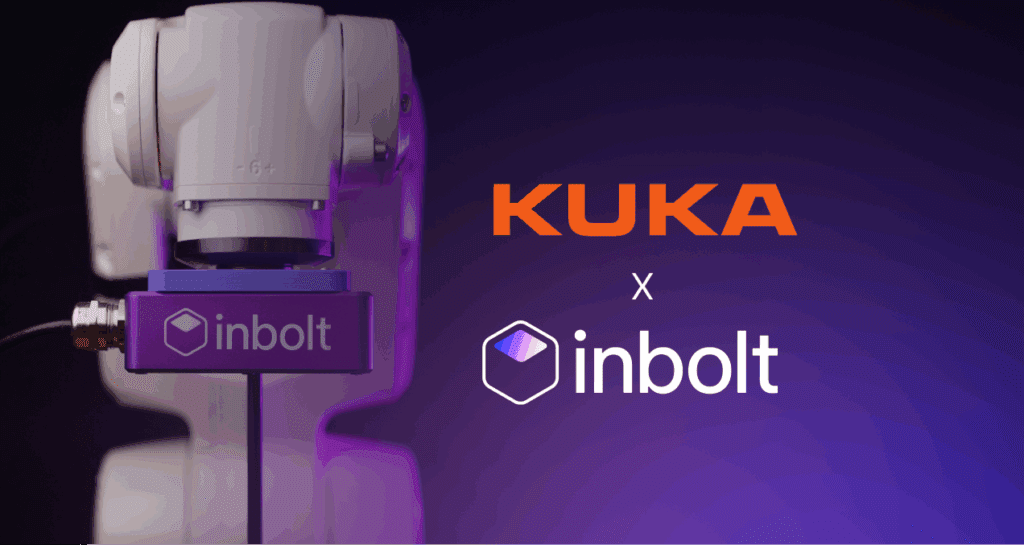
Albane Dersy named one of “10 women shaping the future of robotics in 2025”
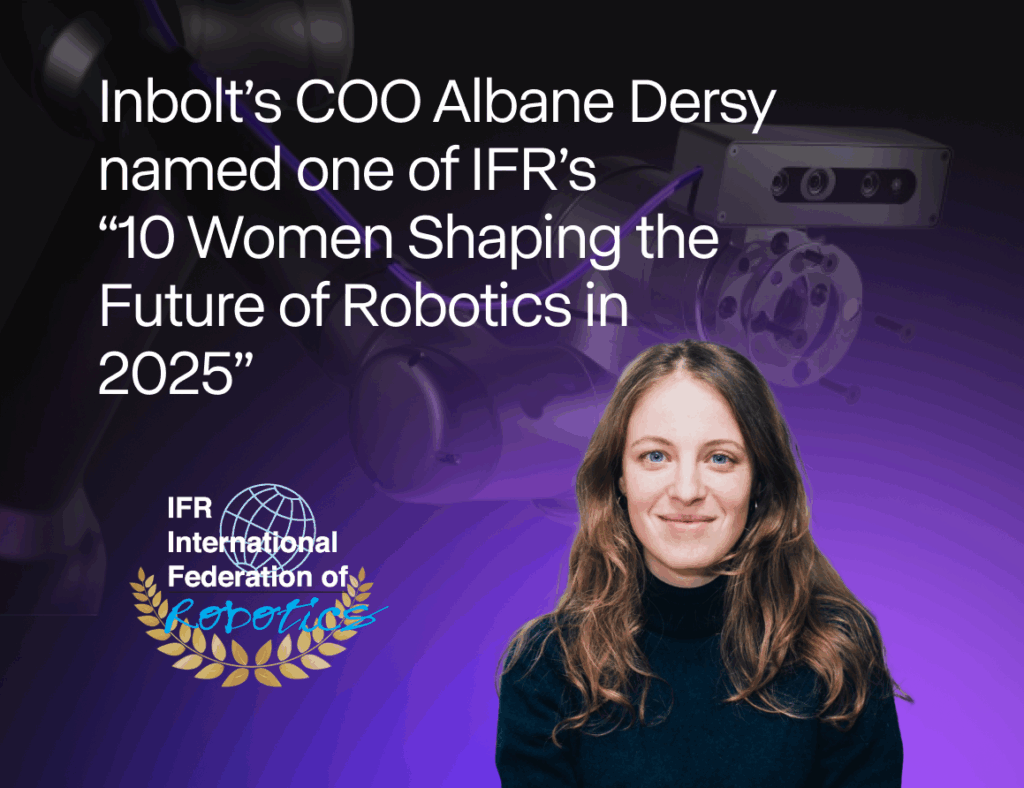
Want to Sound Smart About Vision‑Guidance for Robots?
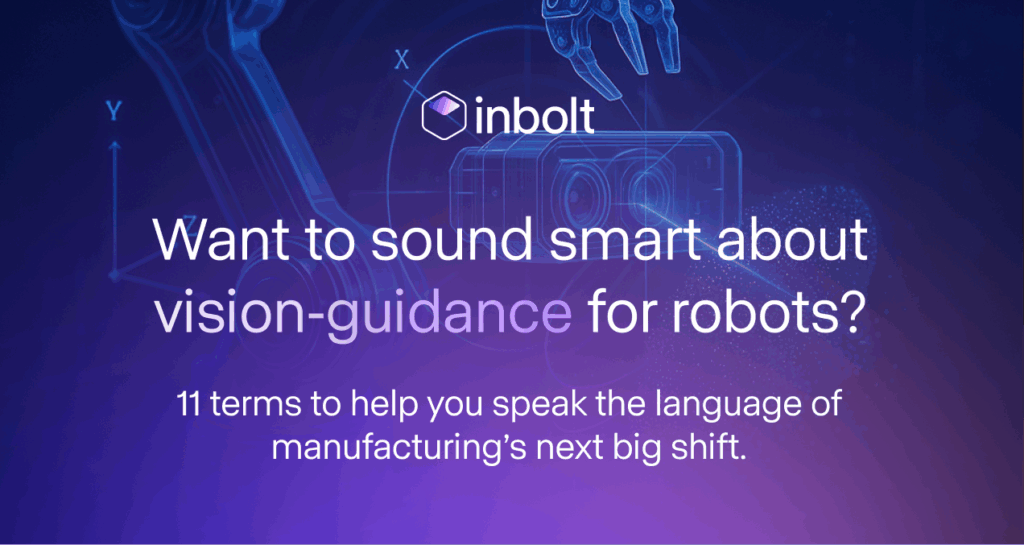
Inbolt Joins NVIDIA Inception to Accelerate AI-Driven Automation
